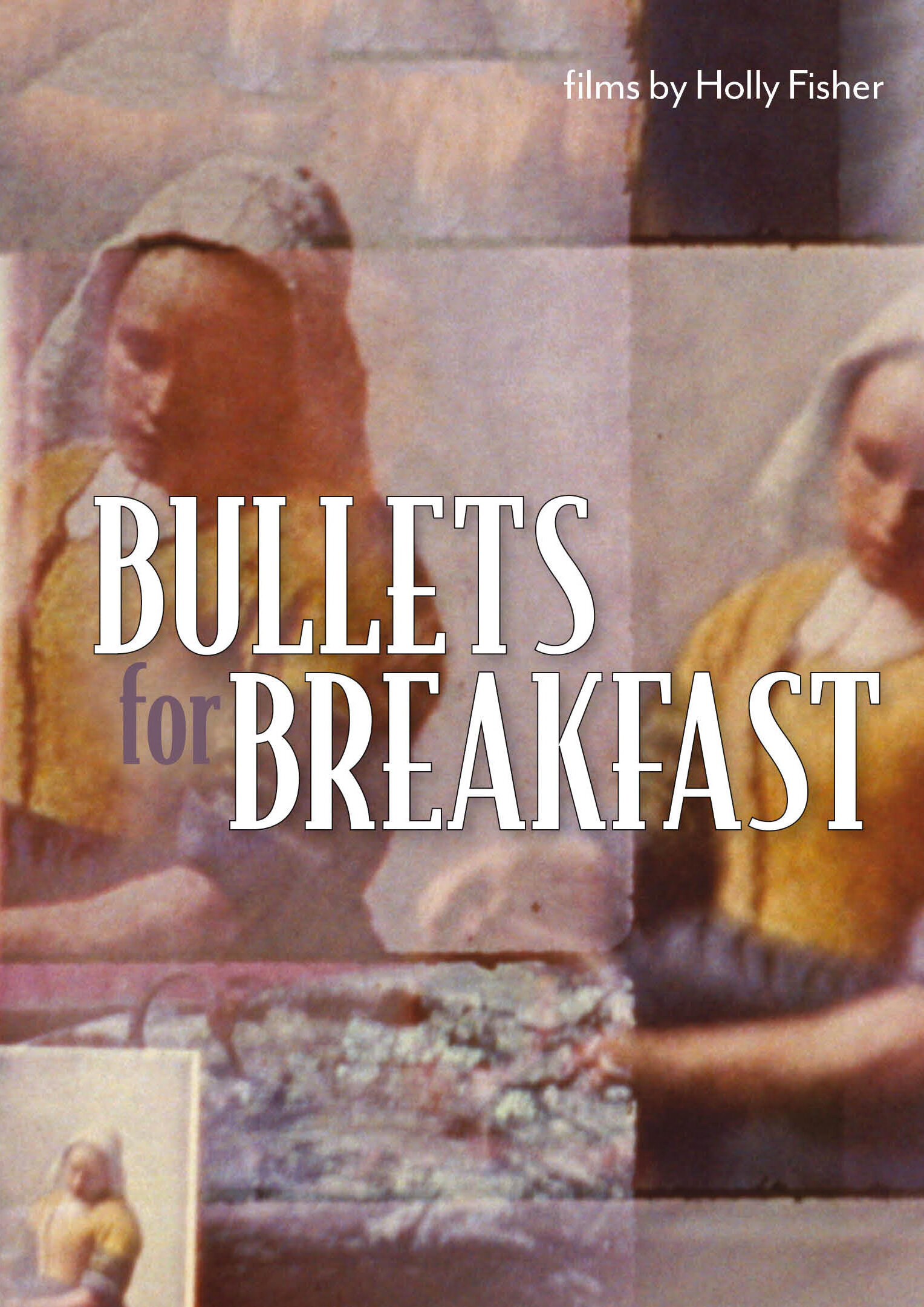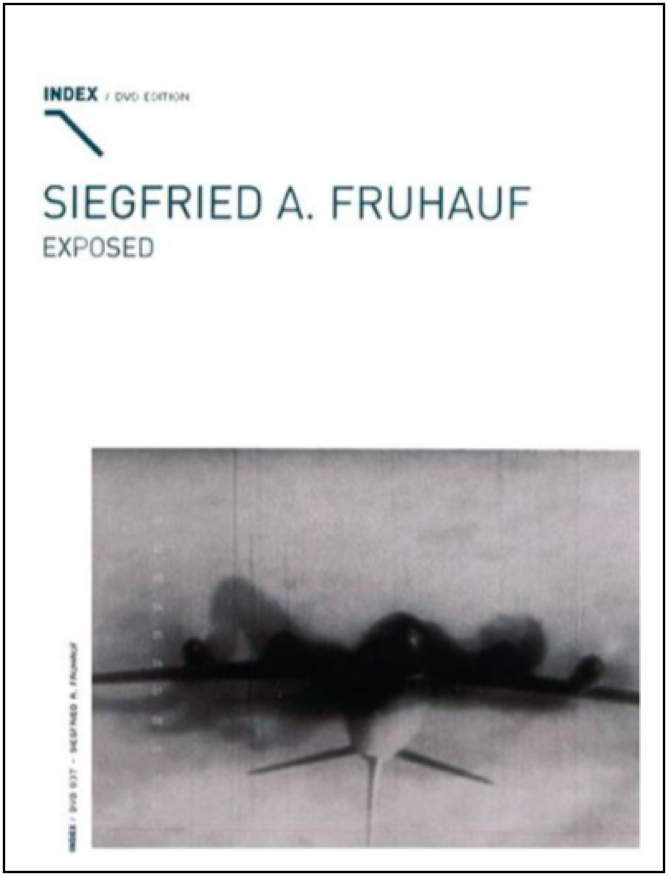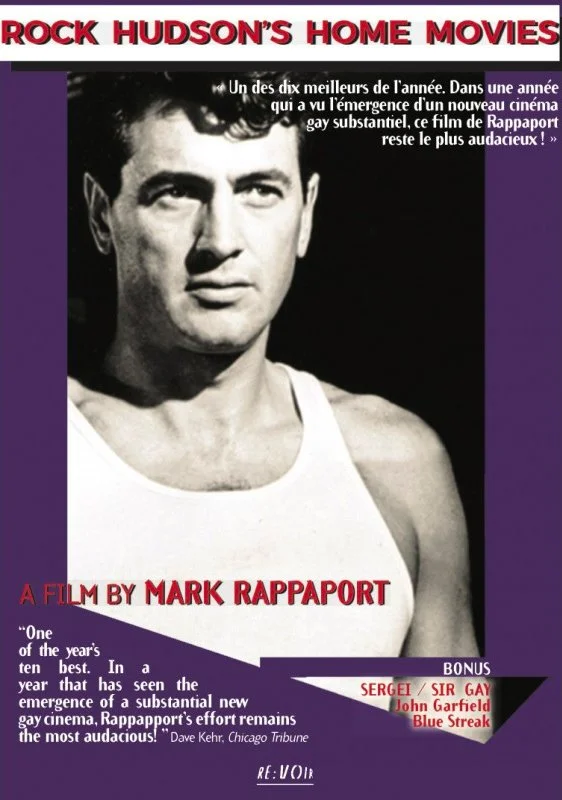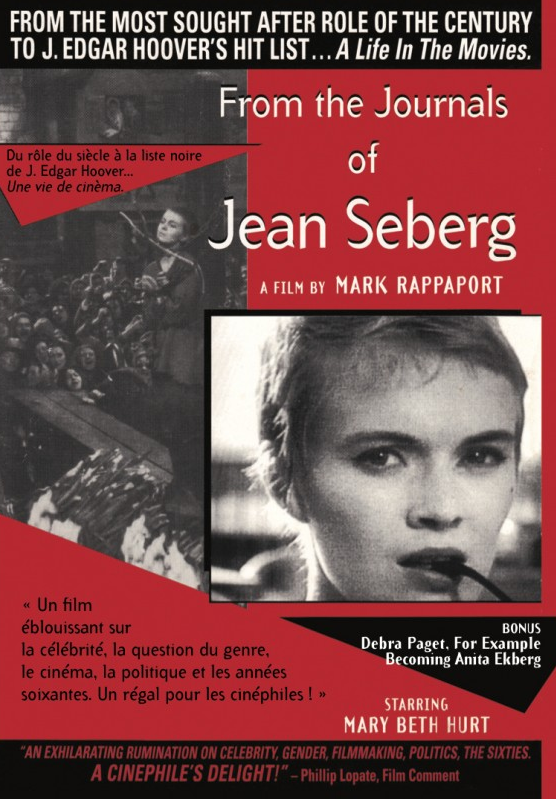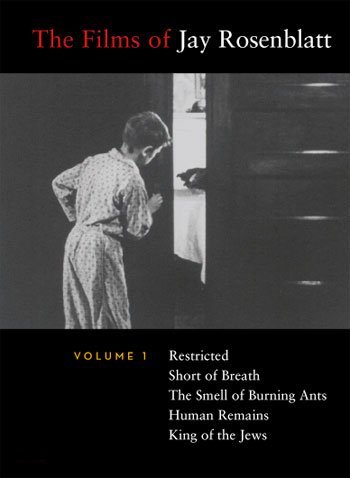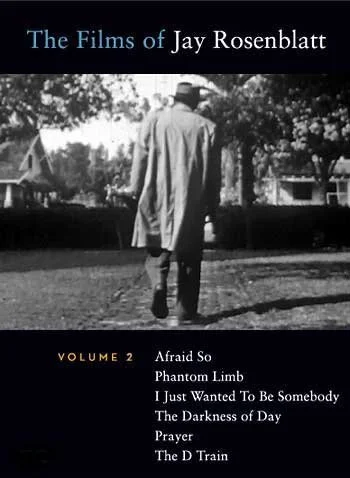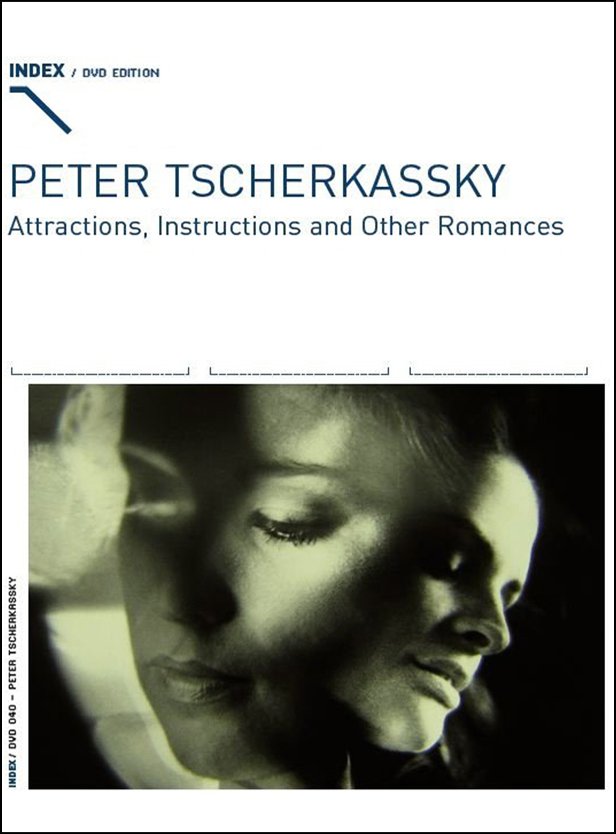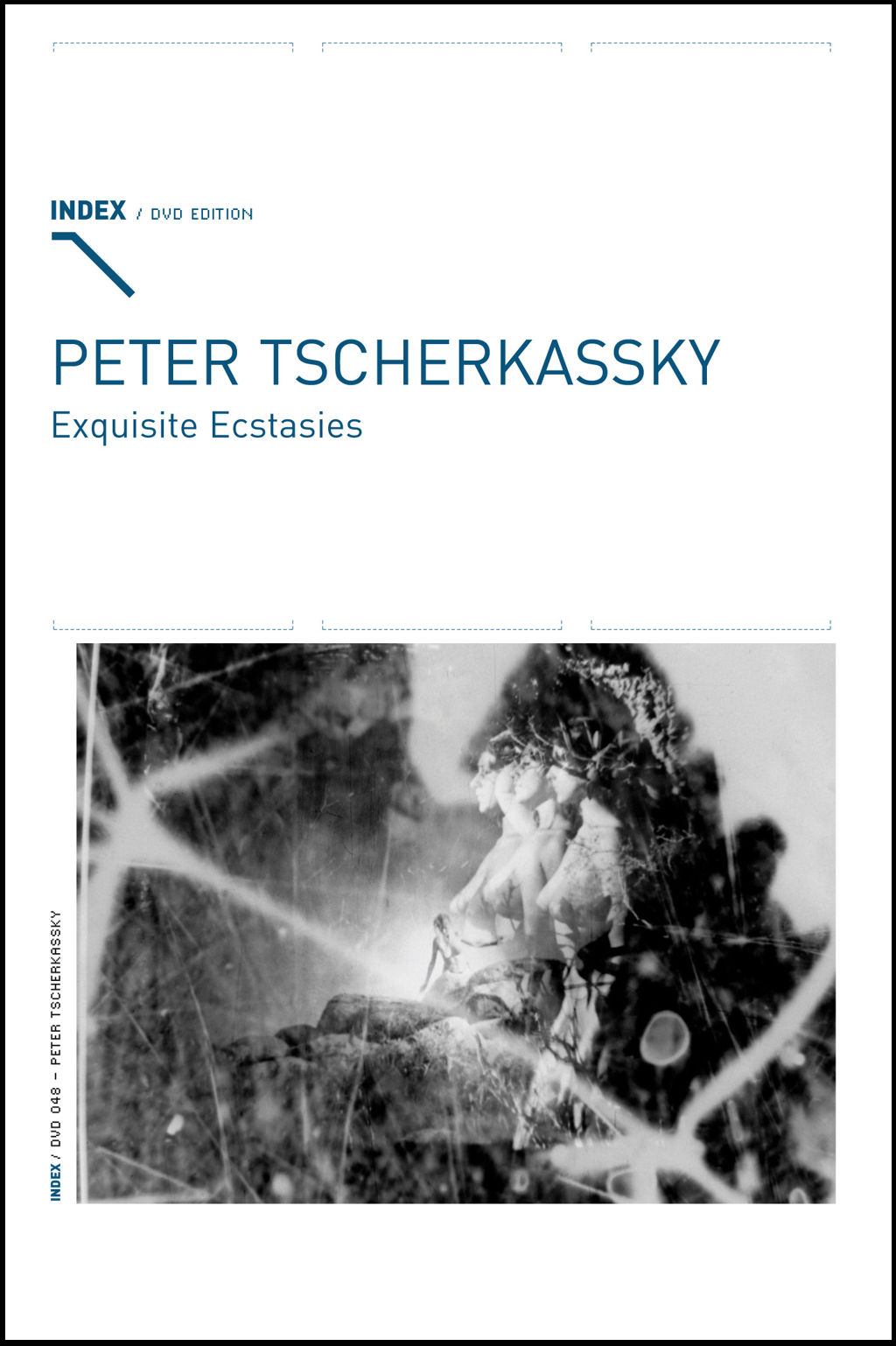FOUND FOOTAGE FILMS
Found Footage filmmakers hold a significant place within the canon of the experimental and avant-garde filmmaking oeuvre. Creative film artists have employed previously filmed footage obtained from various sources, and originating from other film genres – including home movies, newsreels, educational films, scientific studies, industrial films, and fiction films – to fashion their own distinctive visions of cinematographic texture and textual meaning. These range from explorations of the materiality of the celluloid film stock, studies of time and motion, power and gender representation, construction of geographical travel diaries, deconstruction of political messaging, and evocation of emotional states of being.
IS THIS WHAT YOU WERE BORN FOR - STRATEGIES OF APPROPRIATION AND AUDIO-VISUAL COLLAGE
Abigail Child (US, 1981 -1989)
The condensed filmic work of Abigail Child, borrowing strategies from found footage, Appropriation Art, Language Poetry and experimental music, stands a a landmark in the experimental cinema of the 1980's. The processing of interruption and fragmentation inform the series IS THIS WHAT YOU WERE BORN FOR? , reactivating the stakes of montage applied in different artistic practices.
GUSTAV DEUTSCH: FILM IST. (1-12) / DVD-Version
Gustav Deutsch (Austria, 1998)
“It is, in a word, glorious...what I feel is the inherent power and mystery of such material, the arrangement of these images and sounds into a definition of cinema constitutes one of the greatest pedagogic films I have seen.” (Tom Gunning, Film Historian)
ADRIA (Included in the Collection GUSTAV DEUTSCH: NOT HOME. PICTURING THE FOREIGN FILMS 1990-2015)
Gustav Deutsch (Austria, 1990)
In ADRIA (1990), Deutsch assembled the home movies of families visiting the Adriatic resorts during the period 1954-1968 when it became economically possible for them to document their vacations on 8mm film. Deutsch analyzes what the anonymous traveler considers memorable and discovers remarkable regularities, an optical recidivism when it comes to filming architecture, family and leisure time.
Holly Fisher (US, 1992)
“BULLETS FOR BREAKFAST (1992) is one of the most obsessive films in recent memory. A precisely made flood of images, text, and MY DARLING CLEMENTINE cuts a swath across easy comprehension. Fisher constructs the film along the twin axes of visual sophistication and handmade aesthetics – it’s both beautifully meticulous and gorgeously frayed.” (Cameron Bailey)
Siegfried A. Fruhauf (1998—2006)
“Siegfried Fruhauf's films cannot be denied a certain hypnotic effect. In them, material battles, mirroring effects, and illusions of perception take place, audio tracks and image interference signals rage; all the structural experiments that the filmmaker dares do not lead to a rigidity in the purely theoretical. Fruhauf's cinema is highly atmospheric and decidedly non-academic. On the contrary, it is radically undogmatic, oscillating between abstraction and objectivity, between punk and classicism.” -Stefan Grissemann
”My films are not designed so that they can only be watched by connoisseurs. You don't need any prior knowledge to watch one of my films. If you then leave the cinema touched or impressed, you can still deal with the matter. But you don't have to.” -Siegfried A. Fruhauf in an interview, Viennale 2010
ALFRED KAISER: DECOMPOSING NAZI PHRASEOLOGY
Alfred Kaiser (Austria, 1975)
In the second half of the 1970s Alfred Kaiser was entirely unknown to the film world when he went public with two films, namely A THIRD REICH (1975) and A THIRD REICH FROM ITS REFUSE (1977). Both compilation films bridge the threshold between avant-garde and documentary cinema. Kaiser took footage solely from Nazi era film production to make both films. Their conceptual critique equally serves as an attempt to illustrate and demolish the world of Nazi thought and imagery.
VIVIAN OSTROVSKY - PLUNGE
Vivian Ostrovsky (US, 1982-2013)
"An intimate – yet humorous – act of cultural resistance, the cinema of Vivian Ostrovsky is a gesture, implying the filmmaker’s entire body – as she travels around the world, carrying the gear, framing with a camera-eye. She digs in archival footage for an immense repertory of cinematic gestures performed by others – and playfully edits them with her own Super-8 shots. Multiculturalism and polyglotism are woven into this poetics of displacement." (Bérénice Reynaud)
NORBERT PFAFFENBICHLER: NOTES ON NOTES ON FILM
Norbert Pfaffenbichler (Austria, 2002-2012)
"Pfaffenbichler’s unique sensibility finds expression in a growing emphasis upon the comic and the uncanny, whereby his avant-garde and often structuralist approach is coupled with an ever-increasing pleasure in playful experimentation. The source material is simultaneously de- and re-constructed, with a considerable amount of Brechtian surplus value, albeit involving a specifically filmic magnetism. It is impossible to come away from a Pfaffenbichler film without an altered and enriched sense of cinema, its history and possibilities." (Christoph Huber)
ROCK HUDSON’S HOME MOVIES
Mark Rappaport (US, 1992)
This is a collage film that works as a review of film history that revisits Rock Hudson's films in the light of what everyone knows about him, now-essentially that he was homosexual and died of AIDS. Rock Hudson is a unique paradox-the paradigm of manhood on the screen that happens to be a homosexual. The fictional construction of Rock Hudson turns into a text to be read or re-read in many different ways.
FROM THE JOURNALS OF JEAN SEBERG
Mark Rappaport (US, 1995)
This deconstruction of the life and career of this Midwestern girl, Hollywood star at 19, New Wave icon at 21, and suicide at 40, is undertaken by Seberg herself, as embodied by Mary Beth Hurt. The spirit and inventiveness of Rappaport's script, combined with the endless flow of disillusioned observations and carefully chosen and nervously edited film extracts, make this film a remarkably stimulating piece.
THE FILMS OF JAY ROSENBLATT - VOLUME 1
Jay Rosenblatt (US, 1990-2000)
Jay Rosenblatt is a master practitioner of found footage filmmaking. Working since the 1980s, Rosenblatt’s films uniquely deal with the human condition – incorporating the passage of time, birth and childhood, the experience of personal, family and community space, religious faith and tyranny, mortality and death, and the function of memory in evoking emotional states. Rosenblatt’s films are psychologically gripping, often bringing the spectator to the darker places of the human experience, including fear and anxiety, loss, grief, and mourning.
THE FILMS OF JAY ROSENBLATT - VOLUME 2
Jay Rosenblatt (US, 2002-2001)
As a result of his creative reworking of all this found footage material into tightly structured collage films of condensed length, Rosenblatt elevates the short film format to an art form. He has remarked that “A lot of people look at shorts as a calling card to making a feature. I can’t tell you how many times I’ve been asked when I was going to make a feature. I have nothing against features, it’s just that it’s not my goal to make a feature. You know, there are a lot of great short story writers who don’t write novels.”
2016 - PERSONAL CHOICE (Alexander Horwath, Juror)
ERNST SCHMIDT JR.: VIENNAFILM 1896 - 1976 (WIENFILM 1896-1976)
Ernst Schmidt Jr. (Austria, 1976-1977)
"The aim is to break down the usual clichéd "image of Vienna" such as that found in the traditional "Vienna Film" by juxtaposing documentary footage, newly shot material and subjective sequences created by various artists. Individual, self-contained sections of the film gain new meaning within the context of historical material. Familiar sites appear estranged when edited together with historical scenes. Other scenes appear like a persiflage or satirical. The film does not incorporate any commentary whatsoever. It is a collage of diverse materials aimed at conveying a distanced image of Vienna to the viewer." (Ernst Schmidt Jr.)
PETER TSCHERKASSKY: ATTRACTIONS, INSTRUCTIONS AND OTHER ROMANCES
Peter Tscherkassky (Austria, 1982-2010)
"While engaged in a process of deconstruction, Peter Tscherkassky also recognizes the power of cinema, utilizing its control over space and time, in order to uncover the energies of motion and story, of the violence inherent in both revolt and containment. As the materials of the moving image now undergo transformation, as the very term film perhaps become anachronistic, his films make clear that a radical cinema does not simply fetishize the material that filmmakers work with, but rather interrogates those materials and forms for the energies they contain and the meanings they can liberate, through the labor and processes which the maker and the viewer participate in." (Tom Gunning)
PETER TSCHERKASSKY: EXQUISITE ECSTASIES
Peter Tscherkassky (Austria, 1981-2015)
Approaching the Exquisite Corpus' was an alternative title we considered for this DVD release. It would have indicated how the films introduced here from my early Super 8 phase already evidence an artistically consistent path leading to my most recent production to date. THE EXQUISITE CORPUS, and highlighted my endeavor since the 1980s to make the specific qualities of the analog film medium sensuously tangible in the form of "exquisite ecstasies".
PETER TSCHERKASSKY: FILMS FROM A DARK ROOM
Peter Tscherkassky (Austria, 1984-2002)
“A confrontation with the codes of narrative-representational cinema is one of Peter Tscherkassky´s constant concerns. If one attempts to distill a constant from his films, then this must surely be the oscillation between the abstract and the concrete, between the dry and the sensual, which is the source of energy of his work.” (Gabriele Jutz)
BACK TRACK and FAST FILM (Included on the DVD collection VIRGIL WIDRICH - SHORT FILMS)
Virgil Widrich (Austria, 1998-2019)
In the found footage vein, Widrich works with a remix sensibility when he edits together images from hundreds of movies into the same film. In BACK TRACK, he generates 3D clips from (2D) commercial films of the 1950s and 1960s by shooting with a still camera and projecting onto glass. He translates the resulting medley of images into a hand-built three-dimensionality. The visual levels collide (physically), and dream and reality superimpose and dissolve: an audiovisual hall of mirrors in ragingly beautiful black-and-white. FAST FILM was made by digitizing, and printing 65,000 images (sourced from more than 300 movies) which Widrich transforms into three dimensional objects that fold, rip, vibrate, layer on and shatter through one another, resulting in a chase film to end all chases.





